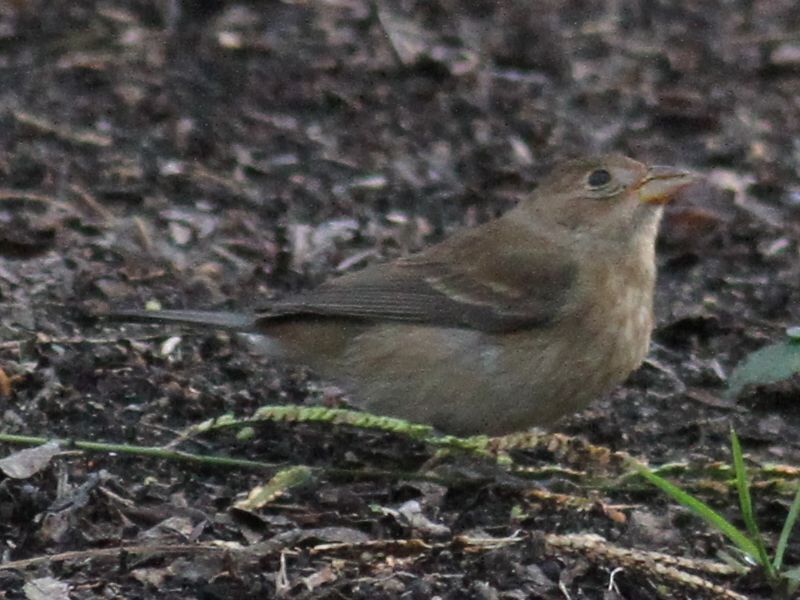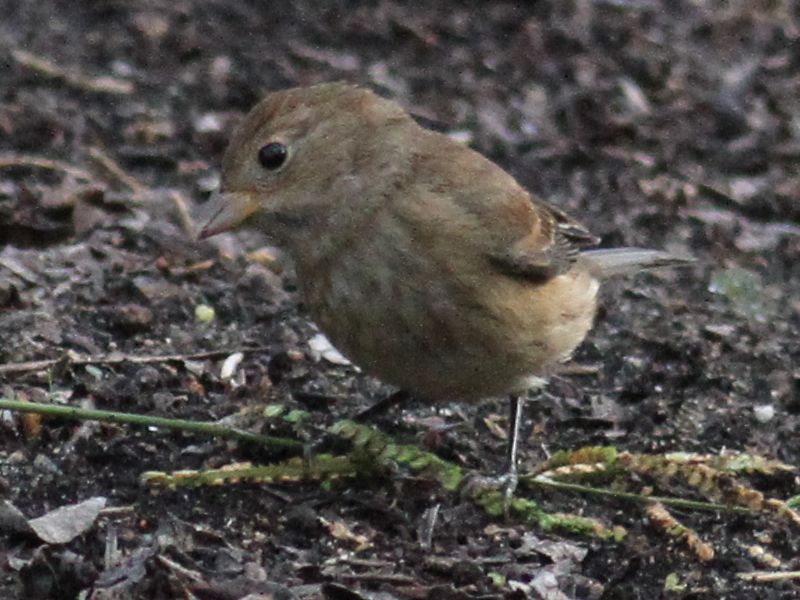[All photographs copyright, Gary Nunn 2012] – Just after dawn this morning at Fort Rosecrans National Cemetery I heard a repeated loud “spik” call and discovered this bunting, holding down a grass seed-head, which struck me as quite different from other Passerina buntings I had seen recently. All Lazuli Bunting I might add. But distinguishing Indigo from Lazuli Bunting can be tricky so I figured it would not hurt to seek some other opinions on this one. I sent around a few photographs to birding friends with experience on the east coast and they agreed with the identification of this bird as an Indigo Bunting Passerina cyanea.
Over the past few weeks I found several Passerina buntings around San Diego and fell into some real late night quizzing of photographs. Invariably the paler washed out looking birds, with suffused buffy breast coloration, and whitish wing bars always pointed towards identification as Lazuli Bunting, the most likely species to be found here in California. But I noticed a difference in this bird immediately. It looked darker brown on the upper parts and had plenty of suffused streaking on the breast. Most importantly it had a richer dark buff, really almost a chestnut tone, to the plumage overall. From some angles parts of it looked the same rich color like a female Blue Grosbeak in fact. The pale buff bars on the wing coverts of this individual can be found in a small proportion of Indigo Buntings.
The call of Indigo Bunting is quite shockingly loud for its size. In fact I found myself looking further away for the source of the repeated high volume “spik” call. I think it might even be louder than a Black-headed Grosbeak which it sounds a bit like. Here is a recording of an Indigo Bunting call that is well matched to the bird I saw and heard this morning.

It took flight quickly when workers started up their gas powered tools nearby. I saw it last, still calling loudly, in the single Myoporum tree close to “The Wall” on the east side of the cemetery.




